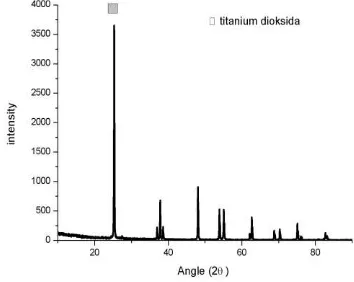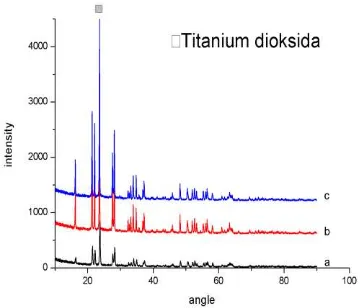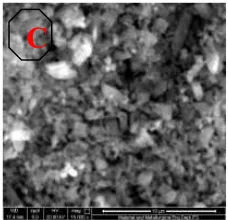1
Abstract
Chemical sensor is an effective way to detect pollutant, toxic and combustible gases. Therefore, a lot of effort has been focused on this field. The conventional metal oxide gas sensors are activated by heat, generally working at a temperature between 200 and 400oC, which limits their applications to flammable gases and some special conditions such as being as biosensors. Recently, many efforts aimed to improve gas sensor performance. The research on nanostructures, giving rise to an increased specific surface area, has brought to significant improvement in sensitivity. Additionally, theoretical models have been developed to justify the size-dependent behaviour of the gas response of nanocrystalline oxides. Moreover, addition of catalysts and/or dopants has been used to obtain a better selectivity; however, stable chemoresistive gas sensors can be obtained only by preparing materials and sensing layers with well controlled morphological, structural and electrical properties.
Titanium dioxide nanomaterial was prepared by sol gel method. First we made titanium solution, it had reacted TiO2 powder (Merck) and 98% concentrated H2SO4. Solution was kept for 4 days and then followed by stirring. In this research, stirring rate were varied 600, 700 and 800 rpm for 2.5 hours at 250oC. This process were continued until we find gel phase and dried the gel at 350oC for 1 h. Dried gel were calcined at 500oC for 1 hour and resulted titanium dioxide powder in nano scale. Powder were charaterized using Scanning Electron Microscope (SEM) and X-Ray Diffraction (XRD).
Based on X-Ray diffraction (XRD) analysis on sol-gel resulted of stirring rate 600 rpm, 700 rpm and 800 rpm, it shown that there are phase changed anatase phase (raw material) into unstable phase orthorombic titanium oxide sulfate (TiOSO4). After sintering at 700 ͦ C, there are phase transformation from titanium oxide sulfat (TiOSO4) into anatase titanium dioxide (TiO2) again. However, the combination of stiring rate 700 rpm and 800 rpm followed by
sintering at 700 ͦ C hopefully can reduce titanium cation or vacancy cation. Based on scanning electron microscope (SEM) analysis, as-received powder titanium dioxide had circular-shape particle. After sol-gel method in titanium dioxide ceramic material which dissolved with 98 % sulfat acid (H2SO4) produce titanium dioxide microstructure capsul shape, look like rice particle. Stiring rate on 700 rpm and 800 rpm can reduce the size up to 120 nm. Stiring rate on 600 rpm followed sintering at 700oC resulted large porosity up to 20 μm, stiring rate 700 rpm had resulted porosity size up to 5 μm and 800 rpm had resulted homogeneity. It can conclude that best product is stirring rate 800 rpm followed by sintering.
Key words: sol-gel method, stirring rate, titanium dioxide nanomaterial, sintering, phase, microstructure
I.INTRODUCTION
Currently the environmental damage caused by the advances technological can not be controlled, especially the environmental damage of air (air pollution). Almost all human activities dispose of waste into the air. Human breathing was dumping waste into the air, furthermore waste of motorcycles, cars, trucks, buses, and fumes waste from the industrial processes, air waste from household activities etc.. So it can not be denied is increasingly polluted. Moreover, the air is very vital for the human. If the air condition worse then public health will be bad too.
Titanium oxide is known to be non-toxic, has a fairly high thermal stability, and its ability to be used many times without loss of catalytic activity. As with other metal oxides, increasing mechanical properties, electronic properties and catalytic properties
TiO2 can be pursued through its forming in the molecular scale, or known as nanoparticles (Iis Fatimah., 2006). So that titanium dioxide is a good material if applied as gas sensors. From previous research of ceramic material TiO2 doping enhanced sensitivity using precious metals (platinum, silver),
Effect Of Stiring Rate During Sol-Gel Method
On Microstructure
And Phase Change Of TiO
2
NANOMATERIAL
Della Dewi Ratnasari
*, Hariyati Purwaningsih
#, Malik A. Baqiya
+, Rindang Fajarin
#, Diah
Susanti
#*
Master Student of Material and Metallurgical Engineering Department, Industrial Faculty of Technology, Institute of Technology of Sepuluh Nopember (ITS) Surabaya
+
Physical Department, Faculty of Mathematic and Physic, Institute of Technology of Sepuluh Nopember (ITS) Surabaya of Technology of Sepuluh Nopember (ITS) Surabaya
Institute of Technology of Sepuluh Nopember (ITS) Surabaya of Technology of Sepuluh Nopember (ITS) Surabaya
#
Material and Metallurgical Engineering Department, Industrial Faculty of Technology, Institute of Technology of Sepuluh Nopember (ITS) Surabaya of Technology of Sepuluh Nopember (ITS) Surabaya
2
TiO2, Pd, Pt, In, Ru, and Rhhave the flow of electrons from the valence band to band conduction band due to the addition of material dopant that is used as a ladder [1]. However this research had not provided additional doping.
While for the synthesis process in this research is used sol-gel method. Sol-gel technique is a wet chemical technique for the manufacture of materials (typically a metal oxide) starting from a chemical solution that reacts to produce nanosize colloidal particles (or sol) that acts as a precursor. The advantages of using the sol-gel method, better homogeneity, high purity, relatively low temperature, no reaction occurs with the rest of the compound, the material loss due to evaporation can be minimized, reducing air pollution [2].
In this study, nanosized titanium dioxide powders were synthesized using sol gel method by various stiring rate 600, 700 and 800 rpm during process and followed by sintering at 700oC
II.RESEARCH METHOD
A. Sol-gel forming procedures
All samples were prepared using TiO2 powder
produced by Merck. Sol-gel process were synthesized using solvent concentrated H2SO4 (98%). TiO2 were weighed using
an analytical balance at 4 grams TiO2 powder add in to glass
beaker and then added 24 ml H2SO4 solvent. After kept the
solution for 3 days, the solute and solvent particles are able to diffuse. Titanium solution were stirred at 200º C for 2.5 hours using 3 rate variations which are 600 rpm, 700 rpm, 800 rpm, thus forming a white solid substance called gel.
B. Drying and calcination
Drying is the evaporation process of liquid contained in the gel until dry so it can take the powder form. Gel is heated in a furnace using a cup without a cover plate, so that the steam can come out. Drying is done for 1 hour at 350º C temperature. After drying, powders were analyzed using SEM and XRD in order to know the phase changes after stiring process. Calcination is the process to remove all unneeded substances from the gel granules [3]. Calcination in this research, to eliminate the waste products of H2SO4 solution that has been evaporated by drying. Calcination is done at a temperature of 500º C for 1 hour in a furnace [4]. Once cool, the specimens are removed from the furnace and then it is crushed in order to change to be smooth powders. Then it is tested by instrument material characterization, they are SEM and XRD to determine the grain size and the structure formed.
C. Making pellets & Sintering
Making of TiO2 gas sensor bulks process from powders is done by TiO2 powder compaction. Forming process procedure are add TiO2 powder in to the die, then put the die in to the compaction machine, give it a pressure. After compacting, the powders were compacted to form a green body in accordance with the desired shape of the mold at 20 MPa, equivalent to 200 bar [5].
After compaction is formed to be pellets solids (such as coins), but still easily broken because there is no bond between
the grains. So that needs to be done sintering in order to get the energy to form a bond between the grains, because given the chance to diffuse. Sintering is done by putting the pellets in the cup then heated to a temperature of 700 º C for 1 hour. After cooling process of furnace, specimens are removed from furnace then they are tested by material characterization intruments, such as SEM and XRD.
III.DATAANALYSIS&DISCUSSION
D. X-Ray Difraction (XRD)
After calcination process, powders product from sol-gel process are tested by XRD. From the results of XRD test, powder specimens phase with variations rate of 600 rpm, 700 rpm and 800 rpm is the same, namely titanium oxide sulfate (TiOSO4) with PDF number 00-049-0467. Crystal structure is orthorhombic (unstable phase), while TiO2 crystal structure is tetragonal in stable condition. To form pellets with a pressure of 200 bar, it is compacted by 5 minutes of holding times. The result is pellet which have 14 mm of diameter and it’s thickness 4 mm. Then the pellets are sintered by furnace with temperature operation 700º C, holding time 1 hour. Goal from this process is form bonds between the grains to be more powerful but not entirely eliminate porosity. To determine the phase, peak, crystal structure, chemical formula, crystal size, mikrostrain, can done by XRD test and peak broadening XRD analyze.
Figure 1. Result XRD test of pure TiO2
Pellet which have variations stiring rate 600 rpm and 700 º C sintering temperature have anatase phase with a tetragonal crystal structure, it chemical formula is PDF number 01-071-1167. Stiring rate 700 rpm variations pellet with sintering temperature of 700 ͦ C have the same phase is anatase and tetragonal crystal structure. However it has different number of PDF 01-086-115 and titanium cations is reduced so that the chemical formula is Ti0.72O2. This can happen because the sintering process / heating, so to be cation vacancy. The combination between 700 rpm of stiring rate variation and sintering temperature 700 ºC allows the metal deficien (titanium) so the chemical formula into Ti (1-x) O2.
Page 372 of 436
3
Figure 2. Result of difraksi sinar-x (XRD) test from TiO2 powder after calcination with (a)600 rpm (b)700 rpm (c)800 rpm variations stiring rate
Figure 3. Difraksi sinar-x (XRD) test result from pellet, with stiring rate
variations (a)600 rpm (b)700 rpm (c)800 rpm by 700 ͦ C of sintering
temperature.
Table 1. XRD test analysis pellet with stiring rate variations 600, 700, 800
rpm by 700 ͦ C of sintering temperature.
Stiring rate variation (rpm)
phase 2 FWHM
degree
B (radian)
(10-3)
D (nm)
(10-3)
600 anatase 25.313 0.289 5,245721 264,
7464 5,38
700 anatase 25.139
6
0.276 5,028165 276,
107
5,6376
800 anatase 47,723
3
0,3346 6,01423 246,
3635 3,20
Pellet have been make by 800 rpm stiring rate variation and sintering temperature is 700 ͦ C have anatase phase with tetragonal crystal system, the PDF number 01-086-1156. This specimen same as the pellets with 700 rpm stiring rate variation and 700º C sintering temperature, happens titanium cation reduction in compounds due to the heating process (sintering) so that its formula becomes Ti0.78O2.
E. Scanning Electron Microscope (SEM) test
TiO2 has natural behaviour, it is agglomeration in powder form. From SEM test analysis magnification of 150 x visible
lump. While SEM test analysis magnification of 20000 x can be known forms of TiO2 grains (raw material) as small dots (like rice grains) with anatase phase.
The next stage is the process of drying by 350 ͦ C process temperature for 1 hour with the goal to eliminate the water content. After drying process,done SEM testing to analysis the micro-morphology of the material. From SEM testing can be seen that stiring process (sol-gel) with sulfuric acid solvent can reduce the grain size of TiO2 and grain shape changes from round to round-capsule, in figure 4.6. It can also be seen from the XRD results that there is a decrease in the value of the crystal size. From stiring rate variation of 600 rpm, 700 rpm and 800 rpm no significant difference from powder after drying, agglomeration and yellowish colored. However, the grain size of 800 rpm macro looks the smallest and most delicate.
Figure 4. SEM test analysis(a)raw material (b)drying 600 rpm stiring rate variation (c)drying 700 rpm stiring rate variation (d)drying 800 rpm stiring
rate variation, 20000 x magnification.
Figure 5. powders SEM test analysis after setelahcalcination process which have stiring rate variations (a) 600 rpm (b)700 rpm (c) 800 rpm
Specimens with 600 rpm stiring rate variation have the most coarse grains -900 ± 700 nm. This is influenced by stiring rate
A
B
C
D
A
B
C
Page 373 of 436
4
so that the slower rotation, the clash between the low point so that the reduction of the grain size was not optimal. As for the specimen with stiring rate variation 700 rpm and 800 rpm have size that is not much different. The smallest size stiring rate variation 700 rpm powder is 132 nm and 800 rpm stiring rate variations powder is 143 nm, its range also not much different until ± 600-700 nm greatest powder size. However, from the SEM image analysis seen any large clumps of stiring rate variation powder 700 rpm. So that stiring rate variation powder 700 rpm has small homogeneity, because it has a large powder size and there are small (not homogeneous). While the powder grain size of 600 rpm stiring rate variation even bigger, but more homogeneous. Powder with 800 rpm stiring rate variation have small size and high homogeneity. Pellets that have been formed by compacting 200 bars of pressure, then SEM test was done to analyze the surface contour (morphology) Specimens which have stiring rate 600 rpm, 700 rpm and 800 rpm produces a different surface contours. Pellet specimen which has 600 rpm stiring rate variation produce large porosity and many even there are holes / 20 micrometer-porous size. 700 rpm stiring rate variation pelet has many holes / porous size about 1 micrometer to 5 micrometers. While the pellet which has 800 rpm stiring rate variation has compact and little porosity behaviour. The surface porosity was also caused by a collision with another object or pellet contacts by hand so there is a little part of the pellets were separated. This can occur because of the nature behaviour of titanium dioxide pellets are easily cracked and broken (brittle).
Figure 6. image for SEM test, done in the stiring rate variations pelets (a)600 rpm (b)700 rpm (c)800 rpm , 15000 x of magnification.
Figure 7. Result of SEM test in the stiring rate variations pellets (a)600
(b)700 (c)800 rpm sintering 700 ͦ C, 15000x of magnification.
After sintering stage which is a removal event the pores between the particles of the material, at the same time occur shrinkage component, and followed by grain growth and increasing bonding between adjacent particles, so resulting compact materials. After the sintering process of titanium dioxide granules can be seen increasingly irregular in figure.7.
IV.CONCLUSION From this research, can taken conclusions that :
1.Sol-gel method on TiO2 ceramic material dissolved in concentrated sulfuric acid (H2SO4 98%) result capsule shape TiO2 microstructure like a grain of rice.
2.Sol-gel mechanism produce unstabil phase TiOSO4 orthohombik.
3.Stiring rate variations able to reduce powders size until 130 nanometers at 700 rpm stiring rate variation, operating temperature 200 ͦ C for 2.5 hours.
4.Sintering process able to transform unstabil phase orthohombik into the anatase phase at 700 ºC operation temperature.
5.Sol-gel method which has stiring rate variation 700 rpm and 800 rpm and then sintered by 700 ºC operation temperature can reduce titanium cations (caused cation vacancy).
ACKNOWLEDGE
The author would like thank to BOPTN ITS 2014 which granted this research and publication.
REFERENCE
[1] Jung. Ji-Young, Lee. Chang-Seop, “Characteristics of the TiO2/SnO2
thick film semiconductor gas sensor to determine fish freshness”,
Journal of Industrial and Engineering Chemistry, Vol [17], (2011), 237–
242
[2] Choi. Andy H, Ben-Nissan B, “Advancement of Sol-Gel Technology
and Nanocoatings in Australia”, Journal of the Australian Ceramics
Society, Vol 50[1], (2014), 121 – 136
[3] Kingery.W. D, Bowen H. K, Uhlmann D. R, “ Introduction to
Ceramics,”2nd ed., Wiley, 1976.
[4] Ruiz. Ana M, “Microstructure of thermally stable TiO2 obtained by
hydrothermal process for gas sensors”, Journal of Sensors and actuator,
(2004), 312-2317
[5] Radecka. Martha, dkk, “TiO2 based Nanopowders for Gas Sensor”, Ceramics Materials Journal, [62], (2010), 545-549


